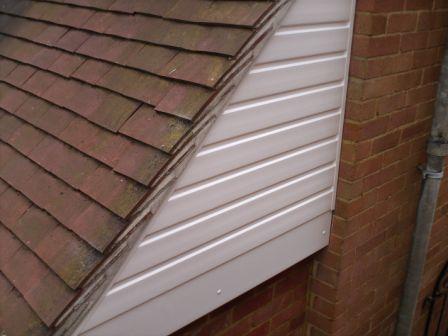Plastic cladding
The term 'cladding' refers to components that are attached to the primary structure of a building to form non-structural, external surfaces. This is as opposed to buildings in which the external surfaces are formed by structural elements, such as masonry walls, or applied surfaces such as render.
Typically made from polyvinyl chloride (PVC), plastic cladding can be used on new-build properties, or can be retro-fitted to the improvement of the general appearance or performance of a building, covering other materials and changing the overall aesthetic.
The level of noise that penetrates through walls can be reduced by adding another layer of cladding, and this can be enhanced further by adding other materials between the cladding and wall.
Plastic cladding can also be used to form interior surfaces. Interior plastic wall cladding sheets are particularly suitable for hygienic wall cladding, lining, sterile preparation and storage rooms, including chillers. Hygienic cladding is also used in bathrooms, showering areas, equestrian centres, hospitals and laboratories, providing non-slip surfaces as well as easy-cleanable hygienic surfaces.
Polypropylene wall cladding sheets can be used in a variety of applications where safety and hygiene performance is important. It is used particularly in food preparation areas where the prevention of contamination is essential.
Plastic cladding has a number of additional benefits including the following:
- Good availability.
- Low maintenance requirements and durability.
- Eas of installation.
- Availability in a range of colours
- It does not need to be painted.
For other forms of cladding see: Cladding.
[edit] Related articles on Designing Buildings Wiki
Featured articles and news
RTPI leader to become new CIOB Chief Executive Officer
Dr Victoria Hills MRTPI, FICE to take over after Caroline Gumble’s departure.
Social and affordable housing, a long term plan for delivery
The “Delivering a Decade of Renewal for Social and Affordable Housing” strategy sets out future path.
A change to adoptive architecture
Effects of global weather warming on architectural detailing, material choice and human interaction.
The proposed publicly owned and backed subsidiary of Homes England, to facilitate new homes.
How big is the problem and what can we do to mitigate the effects?
Overheating guidance and tools for building designers
A number of cool guides to help with the heat.
The UK's Modern Industrial Strategy: A 10 year plan
Previous consultation criticism, current key elements and general support with some persisting reservations.
Building Safety Regulator reforms
New roles, new staff and a new fast track service pave the way for a single construction regulator.
Architectural Technologist CPDs and Communications
CIAT CPD… and how you can do it!
Cooling centres and cool spaces
Managing extreme heat in cities by directing the public to places for heat stress relief and water sources.
Winter gardens: A brief history and warm variations
Extending the season with glass in different forms and terms.
Restoring Great Yarmouth's Winter Gardens
Transforming one of the least sustainable constructions imaginable.
Construction Skills Mission Board launch sector drive
Newly formed government and industry collaboration set strategy for recruiting an additional 100,000 construction workers a year.
New Architects Code comes into effect in September 2025
ARB Architects Code of Conduct and Practice available with ongoing consultation regarding guidance.
Welsh Skills Body (Medr) launches ambitious plan
The new skills body brings together funding and regulation of tertiary education and research for the devolved nation.
Paul Gandy FCIOB announced as next CIOB President
Former Tilbury Douglas CEO takes helm.
UK Infrastructure: A 10 Year Strategy. In brief with reactions
With the National Infrastructure and Service Transformation Authority (NISTA).
























Comments